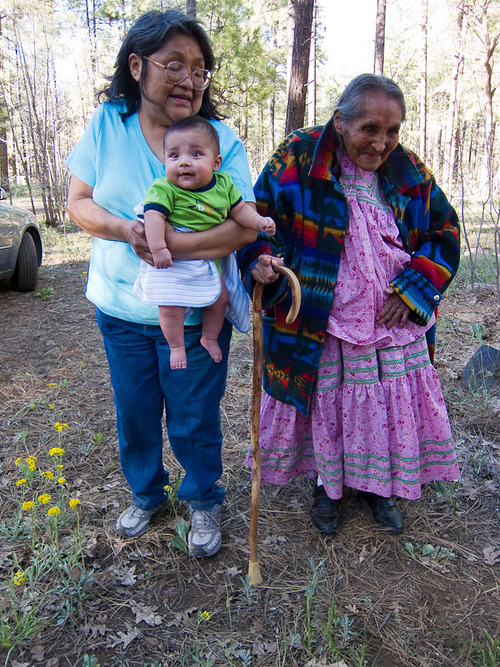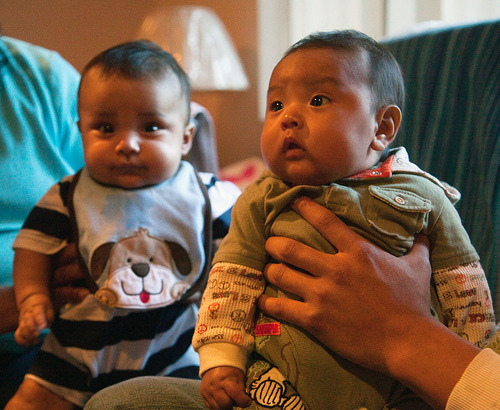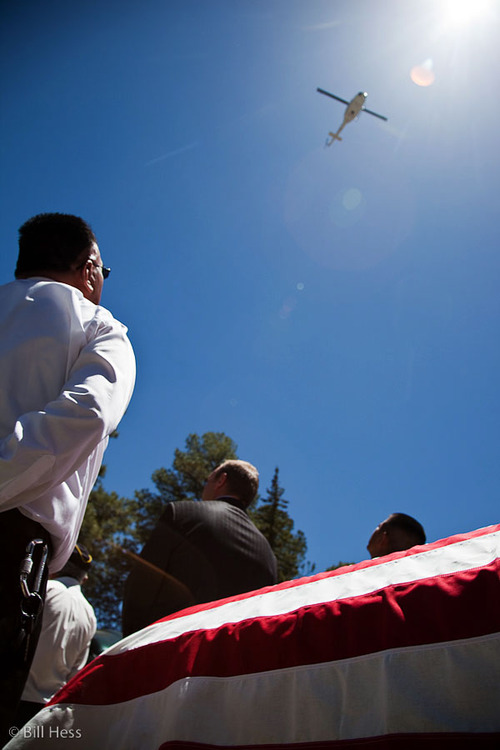
After the funeral service, the flag-draped coffin that held the body of my friend, Vincent Craig, was wheeled outside the doors of the big Mormon chapel and church house in Lakeside. Those gathered around paused, stood very silent and listened. Soon, the distant beating of whirling helicopter rotors could be heard, growing steadily louder as the chopper that they propelled through the air steadily approached.
Then the helicopter appeared, first as a tiny dot rising above the distant trees. Then it hovered directly overhead, beating the air loudly. All eyes looked up. This chopper had come from Overseas Aircraft Support, a company that rebuilds military helicopters. Vincent had showed up there a few years back, told them he had been a helicopter mechanic in the Marine Corps, had asked for a job and had got it. He had helped to rebuild this very helicopter, which, I was told by his coworker and pallbearer Richard Johnson, will soon be in service in Afghanistan.
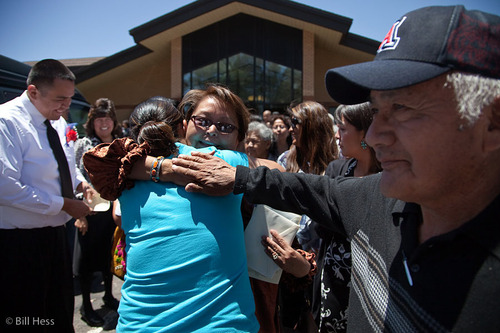
After the helicopter disappeared, Vincent's wife, Mariddie, was surrounded by those who sought to comfort her. Before the service began, a small group of relatives and close friends had gathered in the Relief Society room, where Mariddie delivered the family prayer. She expressed her gratitude for the strength and love of her children, grandchildren, family and friends.
As I discovered when we buried my own parents, The Church of Jesus Christ of Latter Day Saints does not allow photography inside their chapels. I wish that I could have at least taken a picture of the congregation that had gathered in this building to say goodbye to Vincent.
This place was chosen for his funeral services because it is not just any ordinary chapel, but rather a Mormon Stake Center. While the chapel itself is large, behind it is a full-sized basketball gymnasium. A sliding partition separates the gym from the chapel. Twice each year, members of all the wards and branches within the LDS Pinetop-Lakeside Stake, a large area which includes the reservation as well as Pinetop-Lakeside and other non-Indian border areas, gather here for Stake Conference. The partition is then drawn and the chapel and the gymnasium become one huge meeting hall. Just like in Utah, white settlement in Arizona Apache country was pioneered by Mormons and their numbers remain strong. It takes a huge churchhouse to accommodate the people of all the wards when they meet. Even so, Dustinn recalled going to Stake Conference with his parents as he grew. Never once did he see this building filled to capacity the way it was for his father.
For his father, the chapel and the gym were packed to capacity.
As the many mourners had entered, Organist Ann Flake played "Oh My Father," a Mormon funeral standard that was also sung by the congregation as the opening hymn, led by music director and close family friend, Phoebe Nez. Jacob Zuniga offered the opening prayer.
Of the excellent speeches that were delivered in this building on this day, I was moved most by the memories and love expressed by Vincent's three sons, Dustinn, Nephi and Shiloh and by his older brother, Harrison. I will not try to recount any of their words here, but I might include some of what they said in the tribute that I will begin to put together after I post this entry.
Vincent's close friend, Ronnie Peaches, told how the Apache people had adopted this famous Navajo as one of their own. The closing remarks, a summary of Mormon belief in the resurrection, was delivered by President Shumway of the Pinetop-Lakeside Stake.
One day, very near to the end of his life when his physical strength was fading but not gone, Vincent Craig asked for his guitar and then, from his hospital bed, spontaneously composed a goodbye song to his family. Dustinn recorded this final performance and that recording was played here, on this day, inside this chapel.
His voice was weak, but the beauty and love that came from it was strong. The congregation listened. Many wept.
Vincent's sister, Vivian Craig Begay, offered the benediction. Then, as the organist played, "God Be With You 'til we meet again," a representative of Owens Livingston Mortuaries wheeled the casket through a walkway too narrow to accommodate we pall bearers. We, and all the congregation of mourners, followed him into the sun.
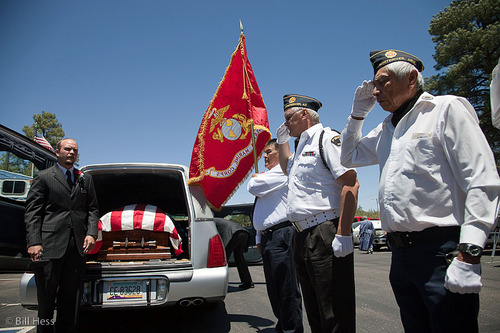
Those of us who were pall bearers then wheeled the casket to the hearse. After we rolled it inside, members of the honor guard saluted as Vincent's brother, Harrison Craig, held the Marine colors.
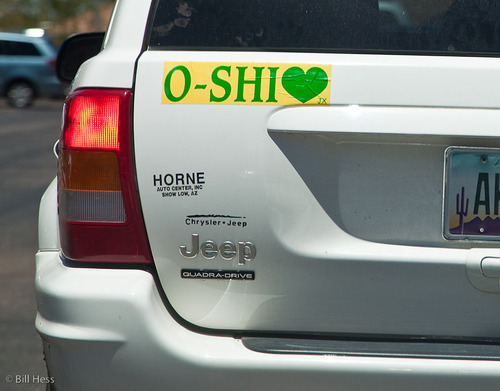
I had to wait a long time before I could pull out of my parking space and enter the line of mourners for the 25 mile processional down the White Mountains to the Whiteriver cemetery. As a pall bearer, this worried me a bit because I did not want to arrive late at the graveside - although I was quite certain they would not start without me.
After I finally worked my way into a line that seemed to have no end in either direction, I saw this bumper sticker directly in front of me and I laughed.
No, not for the mistaken reason that readers unfamiliar with life in this part of the country can be forgiven for thinking. "Shi" is the Navajo word for "my." In one of his songs about the rituals of modern day Navajo romance, Vincent shouts out, "oh, shi heart!"
Hence the bumper sticker, made and marketed by the little company created by Vincent and Dustinn.
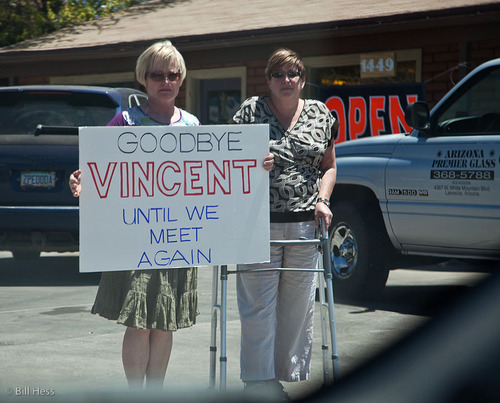
As the procession worked its way through Pinetop-Lakeside, some who could not be in it found a way to express their sentiment.
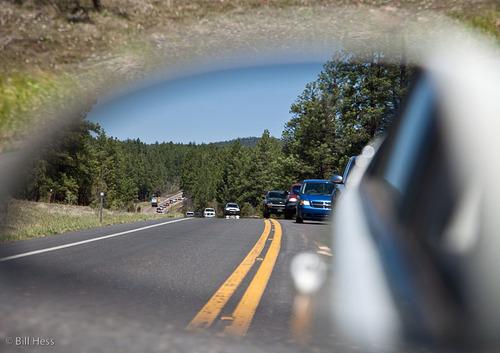
The highway that descends the White Mountains down to Whiteriver is a winding one. Sometimes, when the curves and slants were just right, I would catch a glimpse of the procession behind me in my rearview mirror. I could not see the end of it.
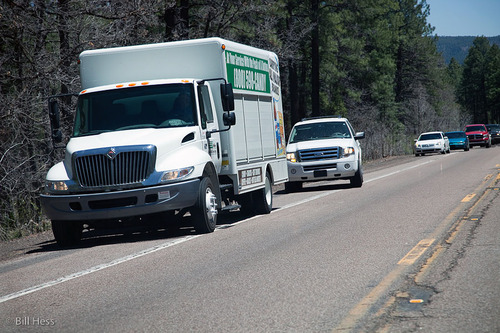
And off to the side, many vehicles traveling in the opposite direction pulled over to show their respect.
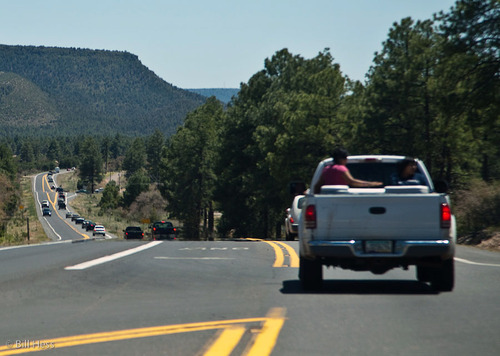
As we neared Whiteriver, I finally got a long view of the procession ahead. Even so, the hearse was beyond the reach of my eyesight.
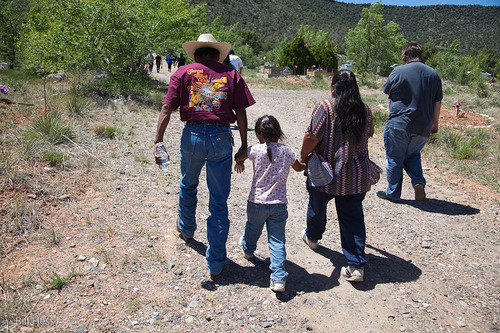
I parked and followed this young family up into the Cemetery. Through Margie, I have many relatives buried here, including my father-in-law, Randy Roosevelt. His was the first funeral that I ever attended on the land of the White Mountain Apache.
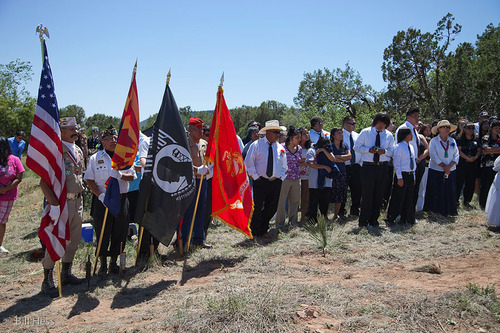
A few of those gathered.
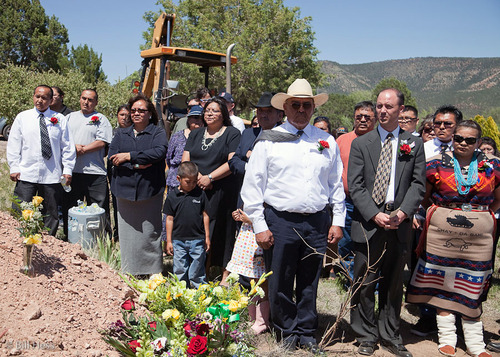
I don't know what the temperature was, but it was hot. Not searing, the way Arizona can be, but hot. Even so, a breeze ebbed and surged. It lifted the tie of Harrison Craig.
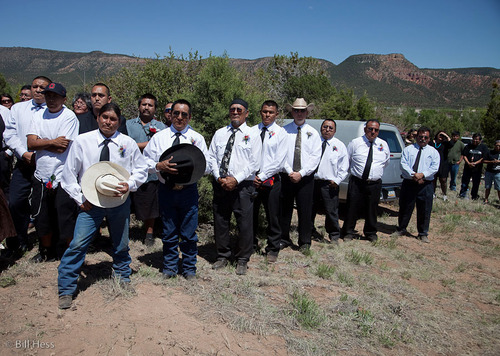
The pall bearers, minus myself. Vincent planned his funeral himself, with help from his wife. No one knew that I would be attending then and I was not on the list of pall bearers. The night before I was needed, Mariddie told me that one of those selected was not going to be able to make it and asked if I would take his place.
I must have gotten a dismayed look on my face, because she quickly added, "or would you rather take pictures?"
"Yes," I answered. "I would prefer to take pictures." Then I thought about it a little more. How could I better honor my friend than to set my cameras aside long enough to carry him to his grave?
The day before, at the visitation, I had shot a couple of frames from the vantage point of a pall bearer. On this day, as we carried Vincent to his grave, my eyes saw many powerful images in front of them. I let them pass. I carried my friend with my full measure of solemnity and respect.
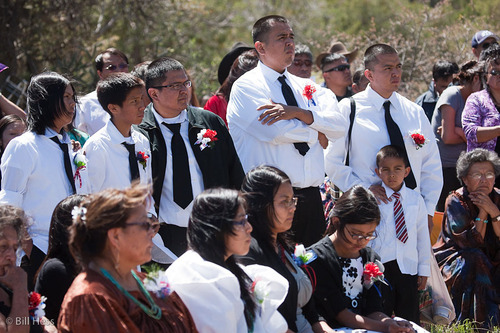
The family of Vincent Craig.
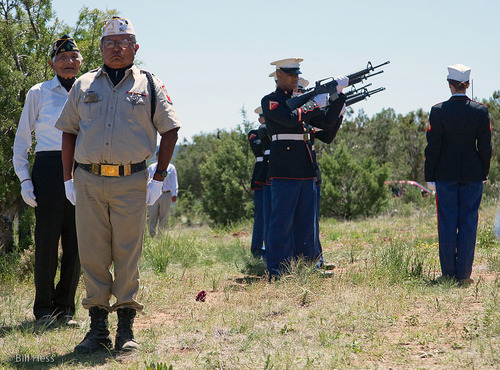
An Marine honor contingent fired their salute in three parts.
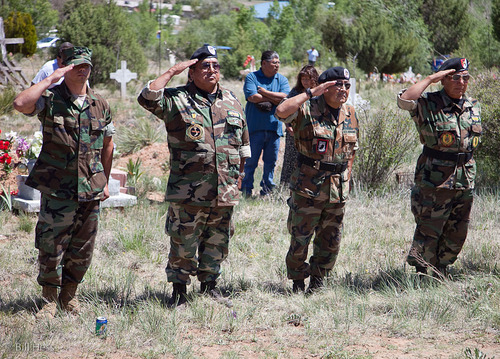
Vincent's fellow veterans saluted as Taps was played.
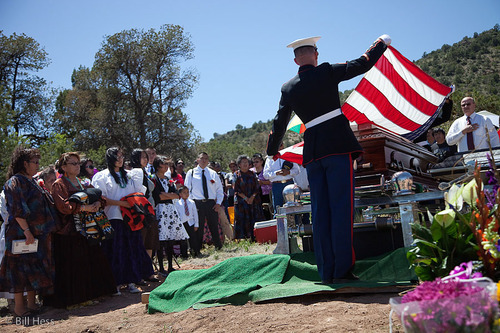
Two Marines fold Vincent's flag.
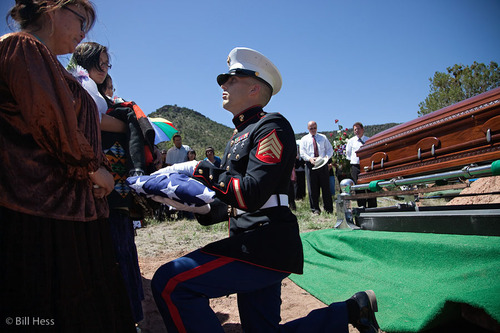
In a display of what struck me as pure and sincere humility, a Marine kneeled before Mariddie and presented Vincent's flag to her. Afterward, he stood up, saluted her and then marched respectfully out of the scene - as did the gunners and bugler.
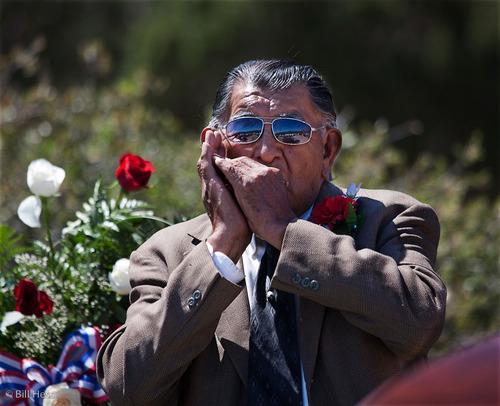
Ernie Crocker played two Mormon hymns on his harmonica, then finished with a love song dedicated from Vincent to Mariddie: "You Are My Sunshine."
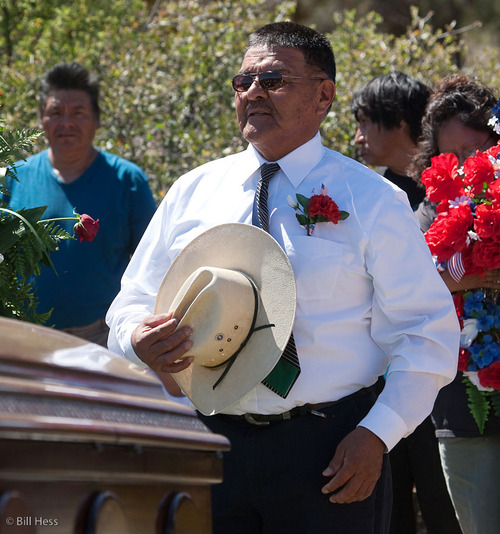
Harrison asked all those not in military uniform who wore hats to remove them, then, as a family member and Mormon Priesthood holder, offered a special prayer of dedication.
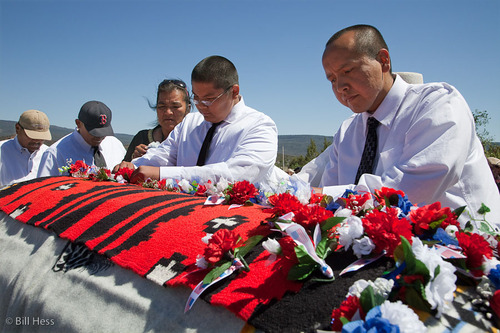
Those who wore flowers pinned them to the Navajo blanket that had replaced the flag and would now go into the grave with Vincent.
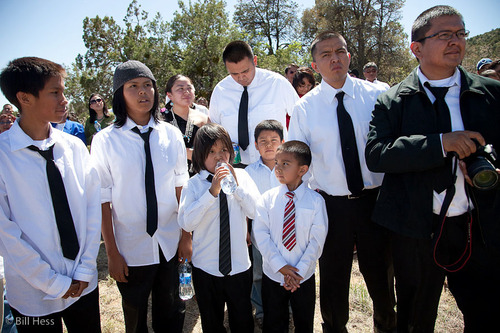
All four of Vincent's grandsons: Kraig, Chance, Tristan and Ari. All three of Vincent's sons: Shiloh, Nephi and Dustinn.
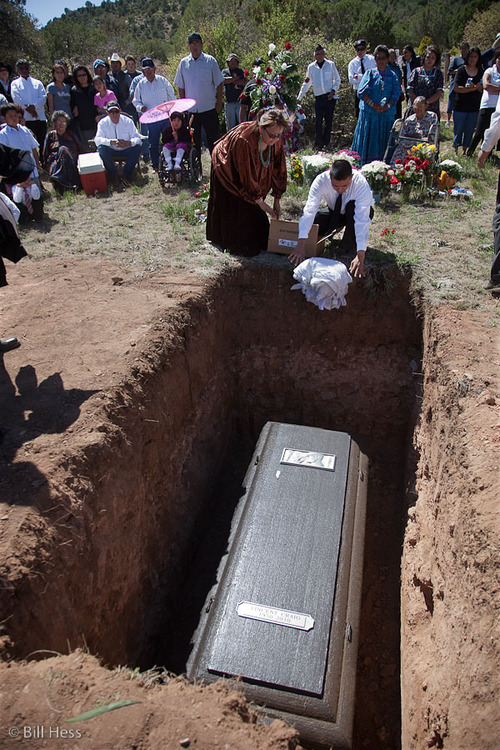
At Mariddie's request, the funeral director noted that he was about to open the casket one last time and asked that no pictures be taken until it was closed up again. Then, in the Apache way, Mariddie and family placed items of food and drink in the casket, including a canteen filled with water and corn chips.
Then the coffin was closed again, sealed into the vault and lowered into the earth. In the Apache way, Mariddie and Nephi then brought an armload of Vincent's clothing to the grave and dropped them in with him.
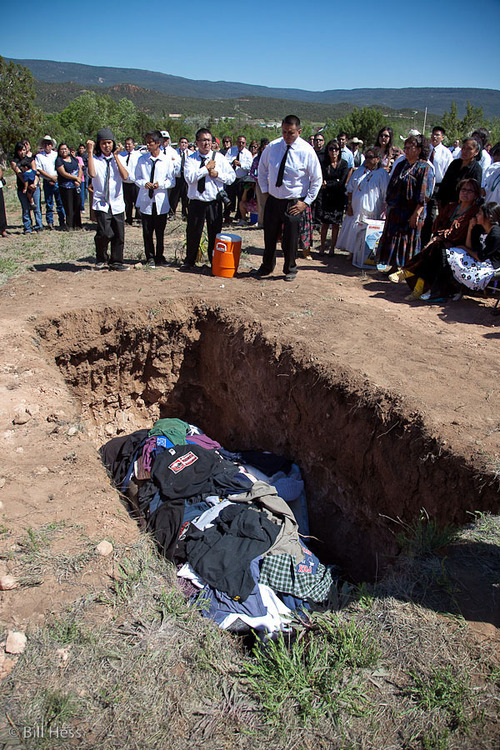
Family members and pall bearers then brought more of Vincent's clothing and personal items and, in the Apache way, left them with him. Now the grave was ready to be covered.
Please take note of the emblem on the top article of clothing. That is the logo for a skateboard competition that Vincent MC'd in Whiteriver in 2000 - just as he MC'd all the Whiteriver competitions. I have not forgotten that day in the late 1970's when Vincent organized and mc'd the first skateboard event ever held on this reservation.
I photographed it all. Somewhere, unseen now for over 30 years, the negatives lie in one of my filing cabinets - along with so many other invisible images.
Take note, too, of all the white shirts and black ties, worn at Vincent's request. A few days ago, I mentioned how, these days, I just basically will not wear white shirts and ties.
Yet on this day, in the midst of this Apache funeral for my Navajo friend, when I looked out and saw all these Mormon-evocative white shirts, black ties, and black slacks, I felt extremely proud to be dressed this way myself.
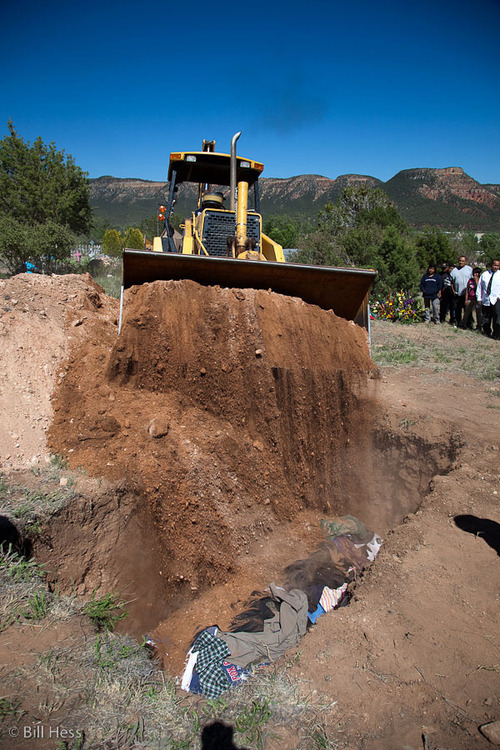
As we all will be, my friend Vincent has now returned to the earth.
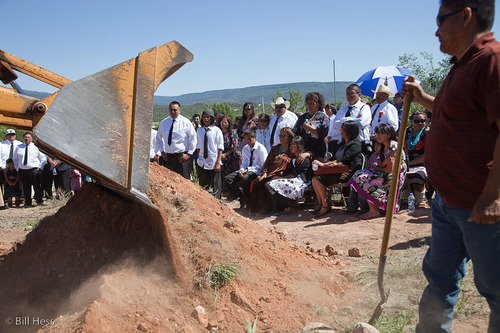
A moment of certainty and awe.
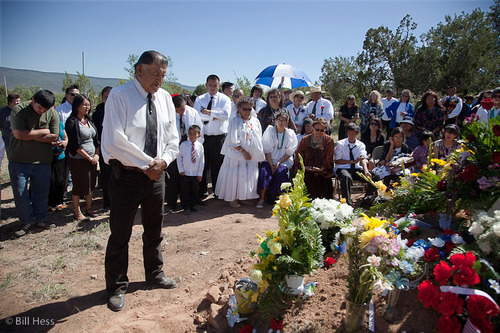
Mormon leader Ernie Crocker then prayed in Apache and dedicated the grave.
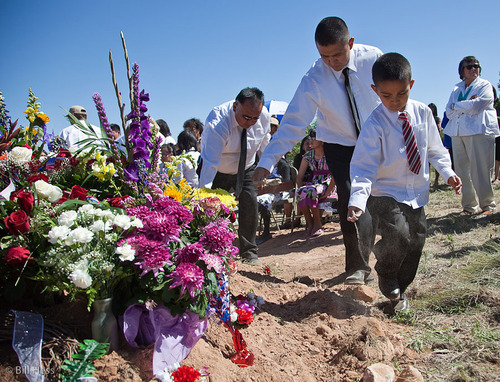
The ash that had been gathered from the cooking fires was then brought to the foot of the grave. First, the men scooped up handfuls, then circled the grave in the Apache way, sprinking ash along the edges as they did. Above is Ari, Nephi, and Emerson.
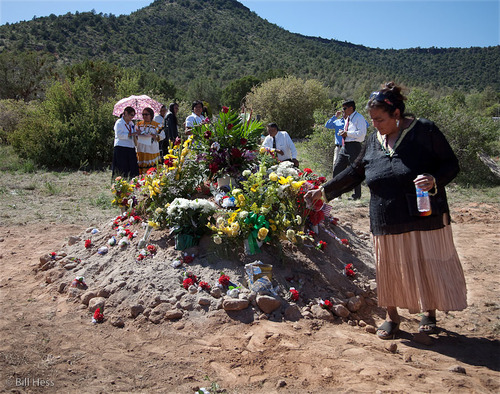
After the men, the women followed. The last one to circle was Vincent's sister, Elvira.
 Monday, May 31, 2010 at 3:23AM
Monday, May 31, 2010 at 3:23AM 

























